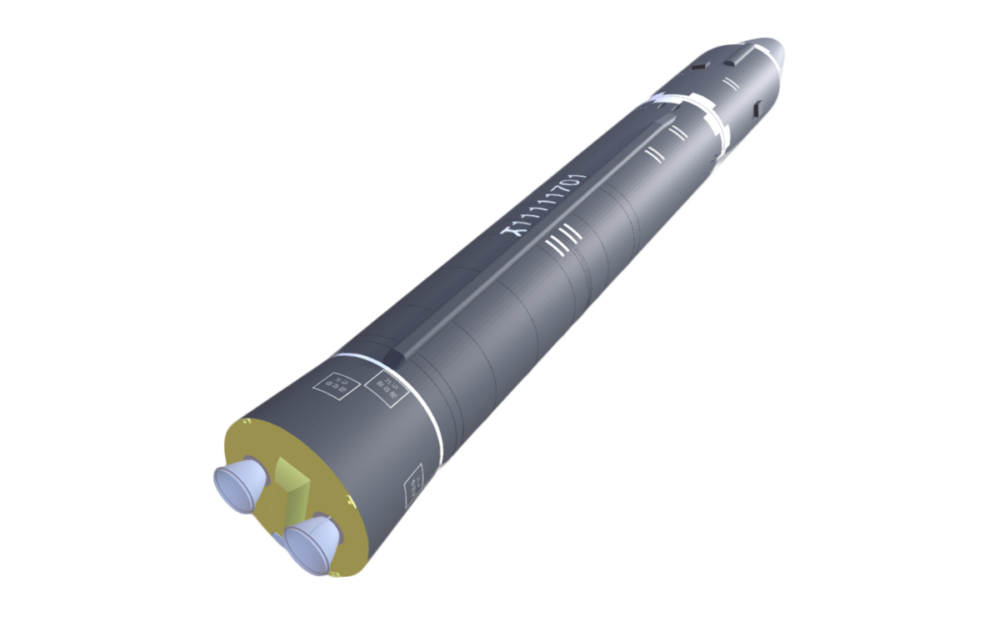
Jeffrey Lewis
Director of the East Asia Nonproliferation Program, The James Martin Center for Nonproliferation Studies
About the image
China has one of the largest and most diverse missile arsenals of any country in the world. And that arsenal is growing. China’s expanding missile force is an important element in a burgeoning arms race in Northeast Asia. Moreover, while the vast majority of China’s missiles are conventionally-armed, ambiguity surrounding conventional versus nuclear-armed missiles poses the risk of a situation as fraught as the Cuban Missile Crisis—in this case over Taiwan—with the United States.
It was not always this way. When the Cold War ended, China’s missile force was small and consisted largely of missiles based on older technologies. The explosive growth of the Chinese economy has resulted in much larger defense budgets in China; those growing budgets have funded the development and deployment of many new military capabilities, including ballistic and cruise missiles.
Understanding the scope and pace of China’s missile buildup requires understanding what China is, and is not, building. The problem is that China does not publish reliable statistics about the size of its nuclear or conventional missile forces. Outsiders sometimes rush to fill in the gaps left by official silence with wild claims, for instance, suggesting that China might have thousands of nuclear weapons hidden in caves that no one knows about. [1]
More diligent analysts, however, can track China’s missile forces using an array of open source information, from accounts in Chinese state media to satellite images.
To shed light on China’s missile forces, the James Martin Center for Nonproliferation Studies (CNS), with the help of CNS Summer Fellow Decker Eveleth, has created an open-source map showing the location of each missile brigade and the type of missile assigned to it.
CNS analysis shows that China has about six hundred ballistic and cruise missile launchers operated by the People’s Liberation Army (PLA) Rocket Forces. This number has increased dramatically in the past two decades, largely as China has introduced hundreds of new conventionally armed ballistic and cruise missiles and modernized its smaller force of about 100 nuclear-capable missile launchers.
The most important insight from the mapping exercise is not, however, the sheer number of missiles; it is the fact that many of China’s new missiles are dual-capable, meaning they can be armed with either nuclear or conventional warheads. China’s new generation of missiles, like the DF-26, blurs the line between nuclear and conventional forces. This would increase dangers in any military conflict, because it may not be clear whether a missile, if launched, is carrying a nuclear or conventional warhead. Similarly, attacks intended against conventional forces might well be misunderstood to be attacks on China’s nuclear forces.
At the end of the Cold War, China’s missile force was small, and was exclusively intended for use with nuclear weapons. In the event of a war, China’s missileers were held in reserve for the unlikely event that China would need to conduct a nuclear retaliation. They played little or no direct role in the scenarios, such as a conflict over Taiwan, that were of greatest interest to China’s leaders—and the greatest drivers of status and budgets. This changed in the 1990s, as China began to deploy conventionally-armed short-range ballistic missiles within range of Taiwan. China now has a modern conventional missile force that can be expected to play an important role in any military conflict with Taiwan.
The growth of China’s missile force can be most clearly seen in the expansion of the infrastructure to support it, from new bases to training areas. When one missile type is replaced with another, facilities are modernized. Each missile has unique support requirements which are reflected in the size and layout of the base. When additional missiles are deployed, new units must be created. Intelligence analysts have long understood that, since facilities must be created before a missile unit can be deployed, close tracking of changes in infrastructure can warn of changes to a country’s missile capabilities. Using this method, we can estimate the number of missiles in China’s arsenal, just as you might estimate the number of guests at a picnic based on how many packages of hot dogs and buns the host has purchased.
Our assessment of approximately six hundred missile launchers is based on identification of six PLA Rocket Force bases, each responsible for six to seven brigades spread over a geographic area. [2] In general, analysts count launchers—silos or vehicles—rather than missiles. This method also helps illustrate the growth in China’s missile force over time. In 2000, China had 15 missile brigades. By 2010, that number had grown to 25 and, today, stands at 34. About one-quarter of these bases have been established in the past few years, and there are seven more in various stages of planning or construction.
The expansion of bases suggests that China’s development of conventional missile capabilities will continue to drive the growth of the PLA Rocket Force. In recent years, China has developed a number of new types of conventionally armed land-based ballistic and cruise missiles, including a hypersonic boost-glide vehicle, called the DF-17, and the DF-100 cruise missile. [3] China is also adding some new bases for nuclear-armed missiles and converting older bases to equip them with new missiles such as the intercontinental DF-41, capable of delivering multiple nuclear warheads against targets throughout the United States. [4]
Despite some claims to the contrary, China’s missile forces are not near parity with the United States. China has fewer nuclear-armed missiles than the United States. And China has fewer conventionally-armed missiles than the United States.
The one area in which Chinese missile forces exceed those of the United States concerns land-based medium- and intermediate-range ballistic missiles. China has a force of about 450 such missiles, while the United States was until recently prohibited from possessing such systems under the 1987 INF Treaty. (The United States does, however, have a significant number of air- and sea-based missiles in these ranges, which were not prohibited by the treaty.)
China’s development of medium- and intermediate-range missiles is notable largely because it uses the same missiles for both nuclear and conventional payloads. The DF-26 is designed to allow China to rapidly replace a conventional warhead with a nuclear one. Growth in the DF-26 force has been especially large in recent years. The U.S. Department of Defense recently stated that China may have as many as 200 DF-26 launchers, a model of which was first displayed publicly in 2006. [5] The existence of a large force of ballistic missiles that are assigned both conventional and nuclear missions raises disturbing questions about escalation in a conflict. If China begins to use conventionally armed DF-26 missiles against U.S. forces in the Pacific, the United States would certainly target those launchers and units in an attempt to suppress the attacks. Would China see an attack on its DF-26 force as a tit-for-tat conventional retaliation or as a dangerous escalation targeting its nuclear forces? What if imperfect U.S. intelligence caused the United States to target other nuclear armed or capable units, such as the DF-31, mistaking them for units with conventional missiles?
This demonstrates that although analysts have a good sense of the overall number of Chinese bases, brigades, and launch units, many of the critical details may not be known precisely-something that would be important in war time.
Bringing China into formal arms control negotiations with the United States and Russia is a desirable long-term outcome. But we might not have the luxury of time. Tensions between the United States and China could turn a crisis over Taiwan into a scenario as dangerous as the Cuban Missile Crisis. This makes it all the more important to open discussions now, even without formal arms control talks. Even if New START-like limits are not possible at this time, the two countries should still discuss crisis management, nuclear risk reduction, transparency and confidence-building measures to help reduce dangers and clarify the increasingly blurry line between China’s conventional and nuclear missiles.
Sources:
[1] Bret Stephens, “How Many Nukes Does China Have? Plumbing the secret Underground Great Wall,” The Wall Street Journal, October 24, 2011.
[2] Each brigade, in turn, has a number of launch units that varies depending on the type of missile. (As best we can tell, each missile brigade is equipped with a single missile type.) So, for example, each DF-5 brigade has six silos, while each DF-15 brigade has 36 mobile launchers.
[3] Although these missiles are probably not yet deployed, China displayed sixteen DF-17 launchers in a 2019 military parade held to honor the seventieth anniversary of the founding of the People’s Republic of China. Such clues help us to know where to look for future deployments of the DF-17.
[4] There is extensive construction at two bases currently associated with the 1970s-era DF-4 ICBM that is consistent with the construction of silos, possibly to replace the DF-4 with the DF-41.
[5] Department of Defense, Report on Military and Security Developments Involving the People’s Republic of China, September 2020, p 166. This number represents a significant increase over the 90 launchers estimated in the 2019 report.
Sign up for our newsletter to get the latest on nuclear and biological threats.
CNS staff members discuss North Korea's second nuclear test in May 2009 and the reactions of major stakeholders in the international community. (CNS)
A collection of missile tests including the date, time, missile name, launch agency, facility name, and test outcome.
The co-conveners and participants of the Euro-Atlantic Security Leadership Group call for the re-establishment of basic principles relating to security and nuclear order.


